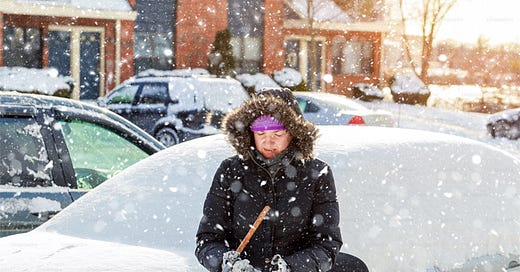Well, it's autumn again and we all know what that means - old man winter is knocking on the door. Now is the time to start thinking about winterizing your car so you can count on it to start when you need it to and run at peak efficiency.
Winterizing an automobile is really a fairly simple task when you take it step-by-step. Here is the procedure in a nutshell:
1 - Engine Oil - The oil that lubricates your car’s engine is arguably its most important fluid.
Some auto manufacturers recommend using different “weight” oils in summer and winter so an important part of winterizing your car is making sure you switch out the existing oil for the grade your car’s manual recommends for cold weather.
A heavy weight oil will make your vehicle’s engine "turn over" more slowly when it's cold, and that makes the car harder to start.
If you're due for an oil change anyway, great. Just be sure to use the proper grade of oil per your car’s manual.
If you aren't due an oil change, you should be sure to use the recommended cold-weather weight oil either at the next scheduled oil change or at the beginning of winter, whichever comes first.
2 - Anti-Freeze/Coolant - Your car's anti-freeze/coolant is arguably the second most important fluid after motor oil, but in the colder months it takes on an even more important role.
First and foremost, anti-freeze keeps your car's engine block, radiator and hoses from freezing up and bursting when the temperature drops below 32 degrees.
It also contains essential chemicals that prevent engine corrosion and help lubricate the water pump. These chemicals break down and lose most of their effectiveness over time.
You should change the anti-freeze in your car every 30,000 miles or 2 years (whichever comes first), so if you didn't change it last year you need to do it now.
You can easily check the effectiveness of your car’s antifreeze with an inexpensive antifreeze tester (about $2 at Walmart). Simply insert tip of the tester into the fluid inside your car’s coolant overflow tank, then squeeze and release the bulb. The tester will show you the lowest temperature at which the existing antifreeze will prevent a freeze-up.
If you don't need to change your anti-freeze/coolant, simply check the fluid level and top it off according to the instructions in your vehicle's owner's manual.
3 - Battery - The most common cause of a breakdown or failure to start during the winter months by far is a weak battery. Batteries lose their ability to hold a charge over time, and if yours is more than a year old you should have it tested at your local auto parts store or service center (most will test your battery for free).
If you happen to live in a really cold climate, you might want to consider replacing your car's existing battery with one that is rated one step higher (in cold cranking amps) than what the owner's manual calls for.
4 - Tires - Ice and snow can make winter driving a treacherous proposition, so making sure your vehicle has a fresh set of snow tires is very important if you live in an area that receives lost of snow and ice. Additionally, if your area receives deep snows, I strongly recommend keeping a working pair of tire chains in your trunk just in case.
If you live in a warmer locale you can probably get by with a good set of all-weather tires. All-weather tires do well on wet and dry roads while also providing a measure of extra traction on light snow.
You should also check the tread depth of your tires and replace them if they are very worn. Even the best brand of snow or all-season tires will do little good if most of the tread has worn off.
And finally, frequently check to make sure that your tires have the recommended air pressure since the air pressure drops and rises along with the ambient temperature.
5 - Heating/Defrosting System - Autumn is always the best time to check your heating and defrosting system for proper operation since waiting until winter can mean having to peer through a foggy windshield and/or having to do repairs in sub-freezing temperatures. Check out your heating system now before you need it.
Conclusion
Most people don't think about winterizing their vehicles until the first really cold weather hits, and sometimes it costs them in more ways than one. Take the time to prepare your car for winter now so you’ll be able to drive with confidence when the thermometer inevitably takes its winter nosedive.
Like this post? If so, check out the archives for lots more.
Know someone who would enjoy reading this? Feel free share it with them…
Be sure to subscribe to receive a new post of inspiration in your email inbox every day.





Good stuff